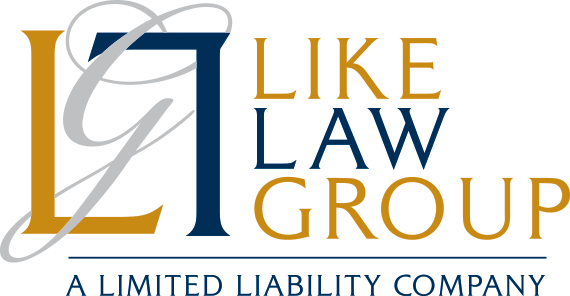November is an exciting time in the world of sports. Baseball is fresh off the World Series, the NBA and NHL seasons are starting to hit their stride, and the NFL is at the halfway point as the annual Thanksgiving slate of games approaches.
Football is by far the most popular sport in America and has been for over five decades.1 The Thanksgiving matchups in 2023 each drew an average of more than 34 million viewers2—an impressive feat in our age of fractured media and streaming services.
No other cultural event today, sporting or otherwise, brings people together the way football does. It has permeated the way we speak, with terms like moving the goalposts and two-minute drill commonly used in everyday situations.
Why has football captured the American imagination like nothing else? Some say football is a metaphor for life that can teach us lessons about discipline, teamwork, and overcoming adversity to reach a goal.
In the spirit of our national pastime, we present to you your estate planning team, football-style.
Your Offensive Team
Meet the offensive players on your own personal estate planning team: your attorney, financial advisor, and tax professional.
Working together, we help you move the ball—in this metaphor, your estate plan—toward the end zone, which represents your goals of saving for retirement, building wealth, and leaving money behind for loved ones.
- Attorney: As the quarterback of your estate plan, we lead the team and make critical decisions under pressure. Things do not always go according to plan, so we are adept at planning for contingencies. A play that looked perfect on paper may need to be changed at the line in response to what we see on the other side of the ball, how much time is left on the clock, and other factors. On a given down, we may need to call an audible and change plays, hold onto the ball and run it ourselves, or pass the ball to another player on the team.
- Financial advisor: A financial advisor creates a game plan based on the situation. They survey the field (your finances and market conditions) and adjust strategies to capitalize on opportunities. Your financial advisor has a variety of designed plays (think investments like stocks, bonds, real estate, and retirement accounts) proven to work in certain situations to go along with the occasional trick play—a higher-risk, higher-reward strategy—that they are ready to dial up at the right moment in the game.
- Tax professional: A tax professional has a unique skill set the team can deploy to exploit mismatches (i.e., favorable tax rules) and swing game momentum at a critical juncture (tax season). They may be on the field for only a few plays a game, but when their number is called, they can make a big impact, helping you to gain field position and create scoring opportunities by finding ways to maximize tax refunds, reduce taxable income, or uncover tax savings.
Your Defensive Team
High-powered offenses are widely heralded in football today. A team that does not score enough points and is constantly playing from behind usually comes up short.
However, many teams and coaches still follow the mantra “defense wins championships.” To achieve your goals, you have to do more than move the ball down the field. You must also protect your own end zone with a strong defense, led by your chosen decision-makers:
- Executor/personal representative: This is the leader of your defense.You have entrusted them with a game plan for after you pass away that involves filing your will with the probate court; taking stock of and distributing your money and property; paying for your final expenses, debts, and taxes; coordinating with beneficiaries; and closing the estate. They have a great deal on their plate, and hopefully, they have been “coached up” before game time by you or your attorney so that they know what to expect when you pass away and they take the ball.
- Successor trustee: Building a strong football teamrequires having depth at every position—players who can step in when a starter goes down.If you set up a living trust as part of your estate plan, you need somebody to administer the trust after you die or become incapacitated. This person—your successor trustee—must be ready to step in at a moment’s notice and execute the plan you drew up, ensuring continuity and leadership.
- Power of attorney agent: Depth is crucial in football because injuries are common. Until an injured starter returns, their backups must competently fill their role in the meantime. In your estate plan, your backup is your agent under a medical or financial power of attorney. They can make decisions about your healthcare and finances when you are incapacitated and cannot make these decisions yourself.
Put Together Your Estate Planning Team
Forty-one percent of US adults say football is their favorite sport3, but only one-third of Americans have created an estate plan4.
We know it is hard to get as excited about an estate plan as it is for “the Big Game.” Football may be a metaphor for life, but at the end of the day, the stakes of a football game cannot compare to what is at stake in your estate plan: everything you have ever worked and saved for and the future of those you love.
Not having an estate plan amounts to playing a game without a playbook or a full roster. It is relying on luck—a Hail Mary—instead of preparation and execution. It is just as important to revisit an estate plan regularly and make in-game adjustments to account for new and changing circumstances.
A football team needs a strong offense and defense working together with defined roles to achieve success. Likewise, you need an estate planning team that works together to take what you have and execute plays that carry out your wishes and result in success.
Do not let your estate plan come down to a two-minute drill when time is running out. Huddle up with us now so that we can talk about how to put you, your finances, and your family in a winning position.
- Jeffrey M. Jones, Football Retains Dominant Position as Favorite U.S. Sport, Gallup (Feb. 7, 2024),
https://news.gallup.com/poll/610046/football-retains-dominant-position-favorite-sport.aspx. ↩︎ - NFL sets Thanksgiving Day audience record for second straight year, averaging 34.1 million, Spectrum News 1 (Nov. 29, 2023), https://spectrumnews1.com/wi/milwaukee/news/2023/11/29/nfl–thanksgiving-day-audience-record–second-straight-year–viewership. ↩︎
- Jones, supra note 12. ↩︎
- Lorie Konish, 67% of Americans have no estate plan, survey finds. Here’s how to get started on one, CNBC (Apr. 11, 2022), https://www.cnbc.com/2022/04/11/67percent-of-americans-have-no-estate-plan-heres-how-to-get-started-on-one.html. ↩︎







